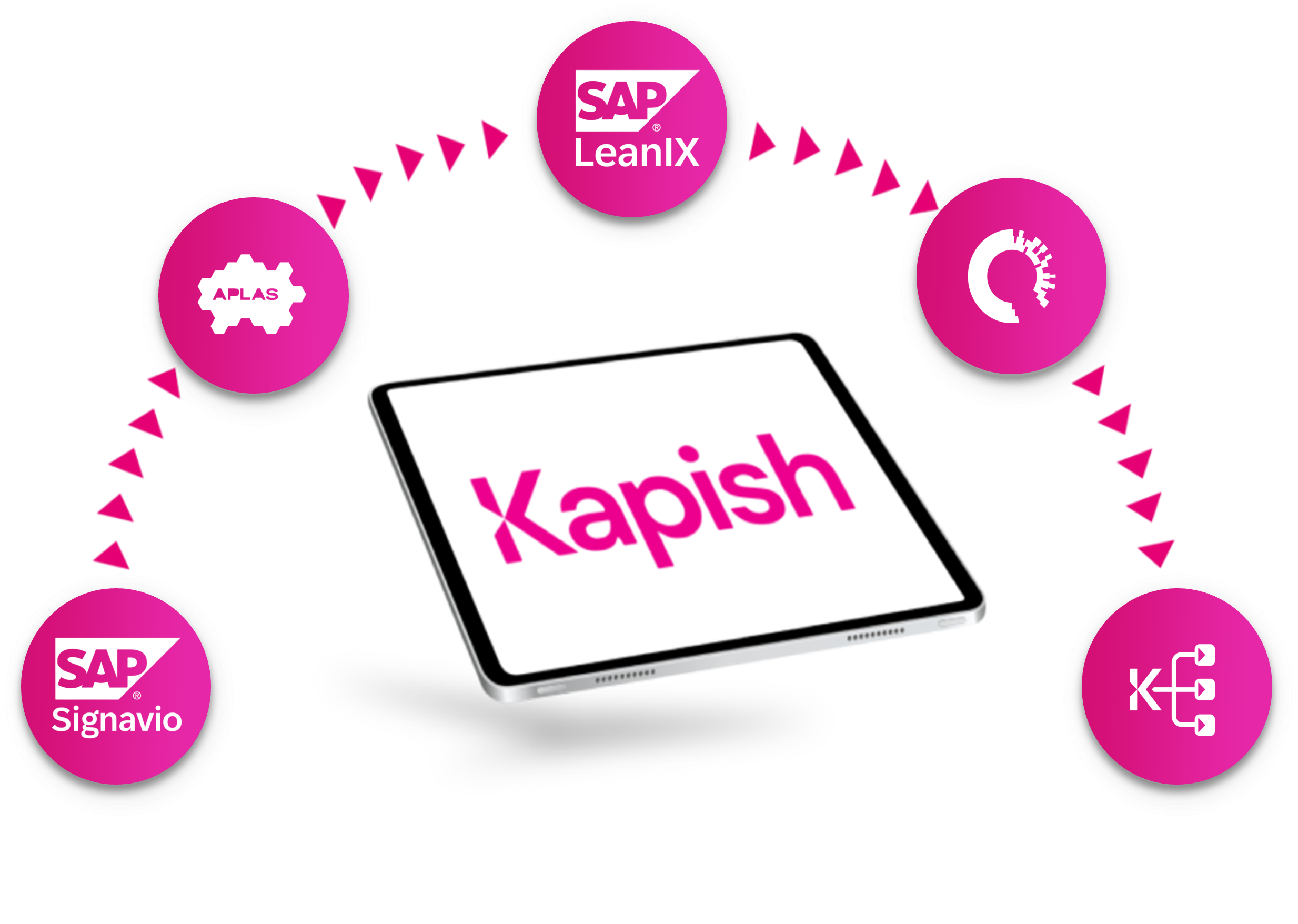PRODUCTS
The steps to successful integration with LeanIX
Mergers and acquisitions remain one of the fastest and most effective ways for companies to grow. But the challenges of bringing companies together have evolved.
Due to technology being intertwined, IT integrations of organizations are one of the biggest roadblocks to overcome during M&A activities. While keeping the day-to-day business running, two sets of capabilities and IT landscapes need to be combined. LeanIX creates the necessary transparency to streamline post-merger integration IT workstreams to realize maximum joint potential.
Map joint strategy to business capabilities
- Capture and model Business Capabilities of the acquired organization
- Map them to existing capabilities and derive a joint Business Capability map
- Classify Business Capabilities with the Gartner Pace Layer method to align investments and resources
Create an integrated application landscape
- Create a complete view of all applications from both companies and analyze them by usage and cost metrics
- Collect feedback from business stakeholders on the functional and technical fit of applications (i.e., application owners)
- Gain understandings of application integrations and dependencies to evaluate change efforts
Define paths forward for each application
- Leverage LeanIX reports evaluating the applications by technical fit, functional fit, and lifecycle
- Align on overall IT merging strategy: e.g., “best of both worlds” vs. “align on major platforms” vs. “the winner takes it all”
- Apply the TIME model to define if applications should be tolerated (T), invested in (I), migrated (M), or eliminated (E)
Model impacts defining the target architecture
- Identify successors for elimination and migration candidates
- Document the future of Applications as impacts and set lifecycle dates accordingly
- Compare different rationalization scenarios based on the modelled impacts
Build and share the integration roadmap
- Set up projects to migrate and eliminate applications taking dependencies into account
- Communicate timelines and impacts to business stakeholders
- Share the visualization of the integrated Application Landscape at future points in time
Execute and track the integration project
- Carry out the planned application harmonization
- Automatically update architecture documentation by executing impacts when projects are completed
- Track project status and measure stages of completion and savings
Products
Solutions
Products
Products
Solutions
Solutions
Business and Digital Transformation
How LeanIX helps you modernise and migrate applications to the cloud
Common Problems
Turn insights into actions and automate transparency for value stream optimisation
